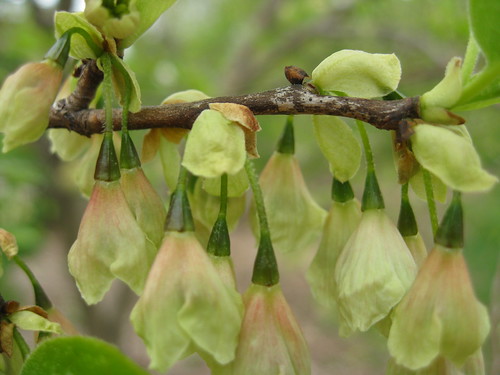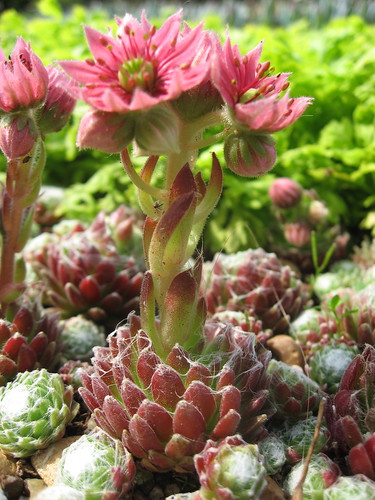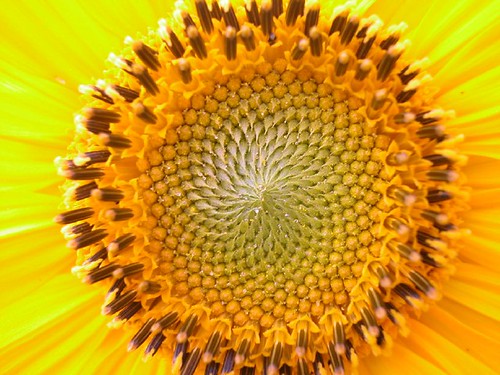Let's look at a few examples. The leaves of this walnut tree give us picture of design simplicity. A thick central vein, branching vascular tissue, a pleasing color and texture.
If we look below the surface using a microscope we will see a world of complexity. Cells filled with chloroplasts (which do the photosynthesis), chloroplasts filled with membranes, proteins embedded within the membranes. All of these components add up to a very complex living environment.
It took scientists over 200 years to come to an understanding of the solar collecting apparatus inside the leaf! We are still asking questions about how it works. All this in spite of its visual simplicity.
Consider the delicate flowers of this Halesia tree. We appreciate them for their quiet beauty, perhaps noticing the unusual square-shaped ovary at the base of each flower.
When we look below the surface we see a complex series of cells, tissues, and processes that contribute to the reproductive success of this plant.
The simple, graceful shape of this succulent and its flowering stalk tell only a fraction of the story of a highly choreographed system that responds to minute changes in light, temperature, and moisture.
And the beautifully arranged spiral of this sunflower suggest the depth of evolutionary experience through which its ancestors gathered hundreds of flowers together on a stalk, squeezing them together in a best-fit packing arrangement that promotes efficiency of pollination and seed dispersal.
All of these "designs" look simple. They feel simple. Plants tell us a story of simplicity through fusion of body parts, reduction of body parts, and a trend toward streamlining body parts. Simplification, fusion, reduction, and streamlining are some of the evolutionary "success stories" in the plant world. We have a lot to learn from them.




No comments:
Post a Comment